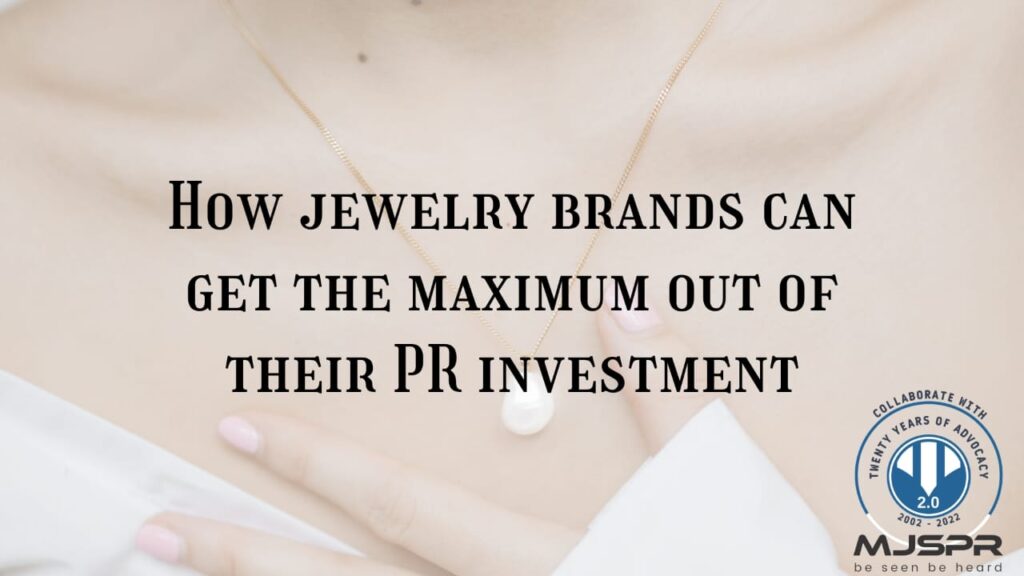A PR agency is a central and considered expense for any brand, regardless of its size. For start-up brands, it is an important part of the brand launch process. Especially since he only has one chance to make the right first impression with the press.
Misunderstanding your product and positioning can lead to potential consumers not understanding what your brand is about, with unfortunate consequences. As an established brand with a desire to raise brand awareness, working with the right agencies and partners is essential to maintaining strong brand positioning and ensuring that the brand continues to be talked about in the media. It is important to
From the first meeting, to the pitch, to the initial implementation stages of collaboration, here are some tips for getting the most out of your relationship.
Clarity – what do you want to achieve with your PR?
Be clear about what you want to achieve in the short and long term for your collaboration with brands and agencies. This will be your overview.
This can be as simple as a bullet point email, but it helps you and your agency be clear from the start on the level of expectations and what can reasonably be achieved for both parties.
Target Groups – Do You Know Your Customers?
During the initial meeting with the potential distributor, be clear about the company’s target audience, retail and sales goals, and also thoroughly review the inspiration behind the product and design. Clients often omit important information that they think is irrelevant to the PR agency, and this is a mistake.
A good PR is just as good as the information you collect from your clients. A good agency should know how to leverage the legacy and history of their brand to provide the press with the best possible image of their brand and products. The more information you give the agency, the better it will be able to build your profile with the right media titles and create a press release that best communicates your brand.
Plan ahead – Do you have materials to support your PR strategy?
“If you don’t prepare, you’re ready to fail.” Ideally, he needs a steady stream of new information every four to six months to keep brands relevant to readers. I have. One of the most important things is to plan each season in detail with the agency so that both can work towards the same schedule at the same time.
PR should be seen primarily as a promotional tool and then as a branding tool. You want to make sure that new product lines hitting retail stores match the same products that appear in newspapers.
Journalists also want to keep their readers informed of the latest and greatest brand news and new product announcements. Therefore, when a product becomes saturated by the press, it needs to quickly get new products into the pipeline, keep the brand in the press, and be talked about on an ongoing basis.
- What are the key products that you sell each month to meet your company’s sales goals?
- When do you plan to introduce the novelty and what are the stories/press perspectives involved?
- When will photos, images and samples be available? The longer the agency has a head start, the better.
PRs should be done at least 4-6 weeks in advance (up to 4 months for longer leads), so the PR will be as good as the information you give your agency and the timeframe to give it – Ending up at the last minute instead of always being reactive and proactively planning ahead is a waste of everyone’s time and money and never results in the best possible coverage.
Samples – Have you invested in product samples?
Providing an agency with an extra set of product samples may seem like an unnecessary extra expense in the end, but it makes sense to hire an agency without having them print samples an hour in advance. there is not. There are some exceptions to this rule (for example, very high-value products), but most keypresses want to see a sample of the product before recommending it to their readers. Without a good sample, you can lose PR momentum in the press and ultimately lose media coverage.
Images – Are you creating quality images for your brand?
The quality of your PR is just as important as the assets you create. Unless you plan to have an agency help you with this important factor, there’s no point in starting until you have a good quality image.
This includes digital assets related to all products sent to the press and, where possible, a short film about the brand or a new product of his, and a photo of the founder/CEO of the brand (in keeping with his identity of the brand). things) are included. The importance of this cannot be overemphasized, especially in a digital environment that is an important part of any media strategy today. Time and again, I have seen brands invest heavily in most areas of their business (product design, packaging, marketing materials) and then neglect to create great assets. In my experience, it’s a big mistake and a big lost opportunity. The press is overwhelmed with time and budget. The higher the quality of assets you can present (layout, resolution, etc.), the better your PR results will be. A good agency should be able to support you with this.
Digital – Will your website stand up to scrutiny?
When creating a campaign, you need to look back and adapt your assets and strategy to the digital platform you’re running your campaign on. For example, running an effective Instagram campaign requires capturing or cropping images differently than Facebook or Twitter campaigns.
A recent Condé Nast Digital Report showed that the effectiveness of reaching demographics through these platforms hinges on customized campaigns. A one-size-fits-all approach is not the most effective strategy in the digital realm.
People – Do you trust your PR agency?
Getting the most out of working with a great agency requires a high level of trust. You can’t have an effective relationship in the first place if you don’t trust the person working for you. PR starts as a small snowball, builds momentum, and gets bigger and stronger over time. Due to press lead times, competition from existing articles already in the pipeline, and advertiser priorities, we typically don’t see fast and furious results.

